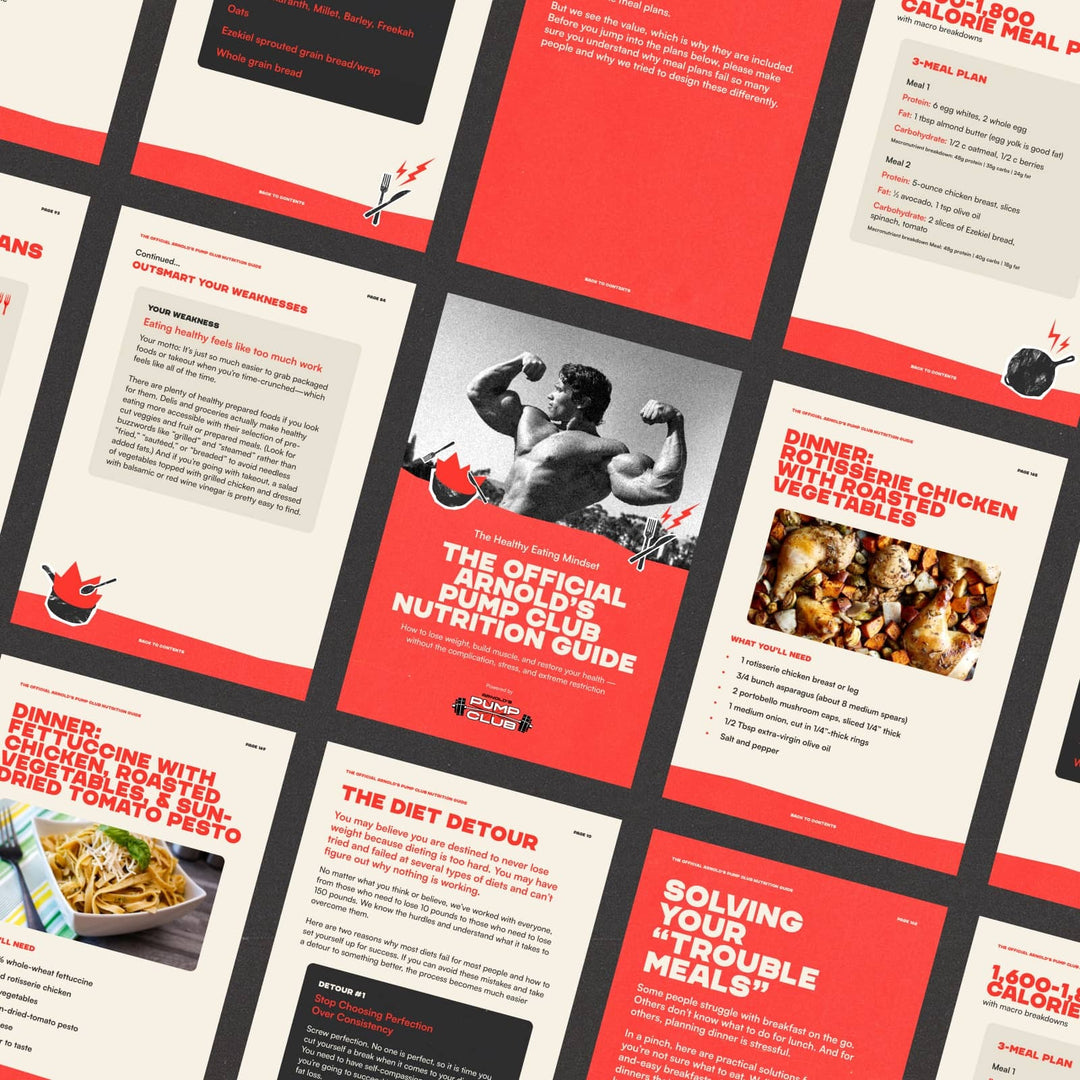Welcome to the positive corner of the internet. Every weekday, we make sense of the confusing world of wellness by analyzing the headlines, simplifying the latest research, and offering quick tips designed to make you healthier in less than 5 minutes. If you were forwarded this message, you can get the free daily email here.
Today’s Health Upgrade
Self-talk your way to lower blood pressure?
Go nuts for brain health
Recipe of the week
Arnold’s Podcast
Want more stories from Arnold? Every day, Arnold’s Pump Club Podcast opens with a story, perspective, and wisdom from Arnold that you won’t find in the newsletter. And, you’ll hear a recap of the day’s items. You can subscribe on Apple, Spotify, Google, or wherever you listen to podcasts.
Calm Mind, Happy Heart
“Where the mind goes, the body follows” is more than a catchy saying.
Researchers recently discovered that practicing mindfulness is an effective way to lower your blood pressure.
Scientists reviewed 12 studies measuring mindfulness protocols and their impact on overall health.
On average, the mindfulness interventions led to lower anxiety, less perceived stress, fewer symptoms of depression, and improved systolic blood pressure (down 9 mmHg) and diastolic blood pressure (down nearly 6 mmHg).
The mental health benefits appear to be the reason for the blood pressure improvements. Research on people with hypertension found similar results. Mindfulness practices and meditation help reduce stress, leading to lower blood pressure and a higher quality of life overall.
But the impact might go deeper. Research also suggests that people who practice mindfulness are more likely to improve their diet and eat more heart-healthy foods, supporting improved health outcomes.
If you want to start working on mindfulness, here are three tips that can help.
During stressful times, take on the role of the observer. Don’t judge your thoughts or feelings. Try to observe what is happening to you objectively. Often, it’s not what you feel that causes stress — it’s your own harsh judgment.
Remind yourself that all stress isn’t bad. Research suggests perceiving stress as harmful to your health can do more damage than the stress itself.
If you feel stress increasing, it’s important to take action. Set aside 10 minutes and focus on calming your mind. You can do this by listening to a guided meditation or silently repeating a word or phrase you choose. The outside thoughts will interfere — but don’t fight them. Take them in, follow step one (listen and observe without judgment) and then return to the meditation or phrase. A vital part of mindfulness's effectiveness is making time for yourself rather than constantly fighting stress or feeling rushed.
Go Nuts For Brain Health
Some people avoid nuts because of their higher calorie content. But what you eat isn’t just about the calories — it’s also about how the micronutrients can support your health.
New research suggests mixed nuts improve brain health and reduce cardiometabolic risk factors.
The study followed participants for more than half a year. One group ate 60 grams of mixed nuts per day, 15 grams each of walnuts, cashews, hazelnuts, and pistachios, while the other group had no nuts. For reference, a handful of nuts is about 30 grams. Then, each group took an 8-week break and switched conditions (those not eating nuts then ate nuts for 16 weeks).
The mixed nuts reduced total cholesterol, LDL cholesterol, systolic blood pressure, and liver fat in each condition. Tests also revealed improved insulin sensitivity in the brain, which is linked to the prevention of age-related metabolic and cognitive diseases.
We’ll say what most people think when they see this type of research — who funded the study? This comes up because nut companies notoriously fund nut studies, but funding doesn’t always mean flawed research. As pointed out in the study itself, the funding company had no role in the study design, data collection or analysis, decision to publish, or preparation of the manuscript. When there’s no involvement, we can judge the methods and results on their merit.
But just in case you’re still skeptical, many other studies with no nut-related funding have found similar outcomes. A meta-analysis of 40 randomized controlled trials determined nut consumption helps with glycemic control and improves insulin sensitivity.
Nuts have many nutritional benefits and are regularly consumed by some of the healthiest populations in the world. But they are calorically dense, so — as a rule of thumb — limit to about one or two handfuls daily.
Recipe of the Week: Granola So Good It Should Be Illegal
We recently got a first look at Eat Like A Legend, the new book by Dan Churchill. If you don’t know Dan, he’s an athlete, chef, and the man who fuels Chris Hemsworth.
We asked Dan if he could whip up a recipe so delicious that you wouldn’t believe it was healthy. He delivered high-protein salted caramel granola. And it doesn’t disappoint.
Tip From Chef Dan: You can make minor adjustments to the recipe based on what your body needs. Want extra energy for that big presentation? Double the nuts and halve the oats. Have a big run or game coming up? Bump up the honey or maple. And feel free to swap in your favorite nuts — I love walnuts, but pecans or almonds kill it, too.
Ingredients
2 cups rolled oats
⅔ cup unsweetened shredded coconut
½ cup roughly chopped raw walnuts
3 tablespoons vanilla protein
¼ teaspoon kosher salt
⅓ cup maple syrup or honey
⅓ cup extra-virgin olive oil or melted coconut oil
2 eggs or 2 flaxseeds eggs
Instructions
Preheat your oven to 350 degrees F.
In a medium mixing bowl, combine your oats, shredded coconut, walnuts, protein, and salt and stir well. In a small mixing bowl, stir together the maple syrup and oil, then add the eggs and whisk until smooth. Pour the maple syrup mixture into the oat mixture and stir to coat well.
Spread the mixture evenly onto a large parchment paper-lined baking sheet and bake in the oven, stirring every 5 minutes or so, until evenly golden brown and some epic clusters have formed. It will take about 15 to 20 minutes. Let cool completely. (It keeps in an airtight container at room temperature for up to 2 weeks.)
Eat as is, or serve with yogurt, milk, or your favorite fruit!
Enjoy, and let us know what you think! If you grab a copy, be sure to save your receipt. Dan has something special planned for the positive corner of the internet.
—
Publisher: Arnold Schwarzenegger
Editors-in-chief: Adam Bornstein and Daniel Ketchell






















